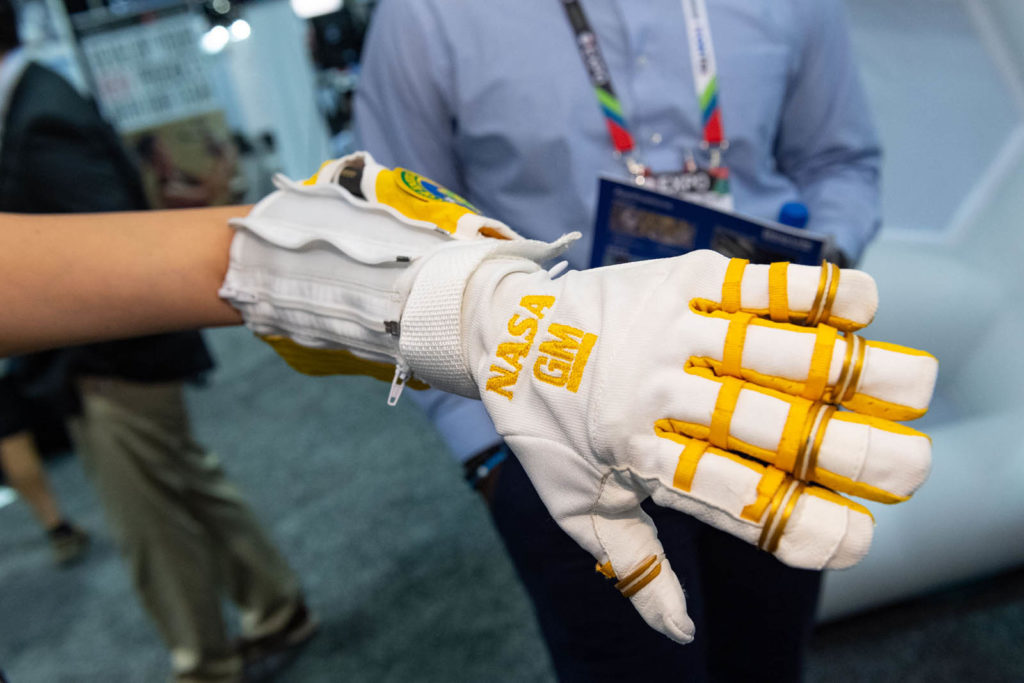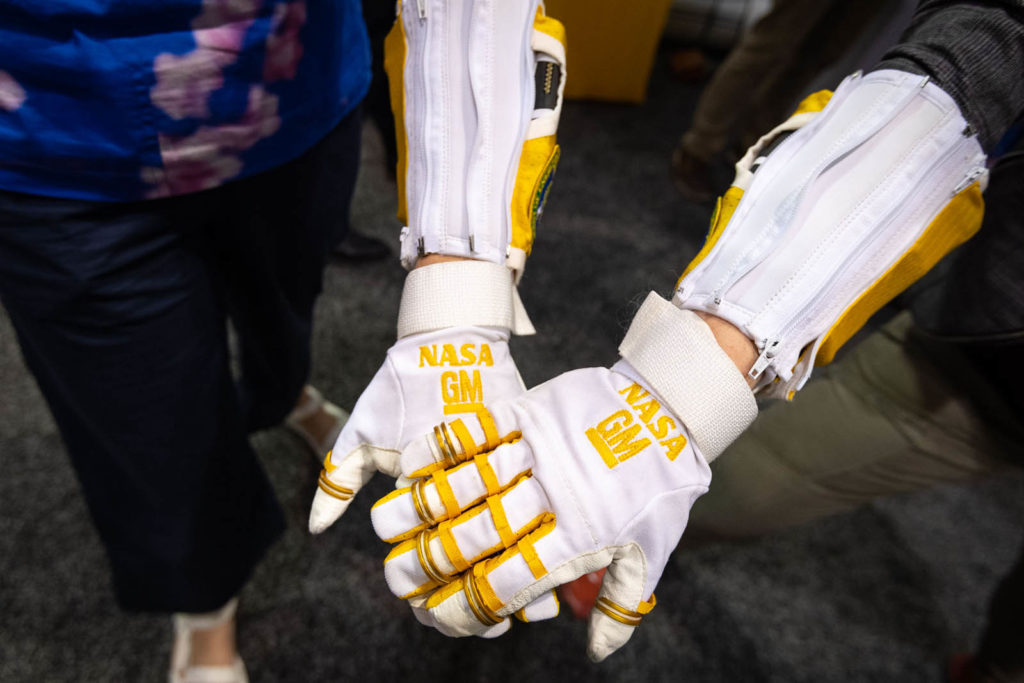Presentations at IFAI Expo’s Advanced Textiles Conference explain textiles’ critical role in NASA’s missions.
by Janet Preus
NASA was among the exhibitors that also served as presenters at IFAI Expo in Orlando last week. In two presentations—an Advanced Textiles Conference education session, and a shorter, more informal “campfire” on the show floor— NASA representatives stressed the importance of a range of textiles used in the International Space Station (ISS) and in future space missions.
Molly Harwood, soft goods designer at NASA, said that simply existing in space is a challenge. “Everything that goes up to the station goes in a bag,” she said, which becomes a logistical problem. Futhermore, everything used, stays with you. Understandably, there is a push to make things multi-functional, so that the bag can become something else, and because space is at a premium, inflatables are especially useful.

“People have to actually live in space,” she said, so “the need for soft goods is everywhere to provide an environment that’s both functional and comfortable.”
The stakes, of course, are unusually high, so materials, how the end product is assembled, its life cycle and how it will be used must all be carefully considered. That fabric tether holding the astronaut to the ISS outside the space station, for example, has to be failure proof, so the stitching won’t pull away.
“Your client is in an extreme environment—with no gravity,” she adds.
A unique challenge in zero gravity
One of the challenges to be addressed in the zero gravity environment of space is sweat. The evaporation of sweat is what cools our bodies when we get too warm. But the careful thermal balance that’s possible on earth is interrupted in space, because in zero gravity, there is no convection (hot molecules rising and cold falling). As Mary Hakam, technical advisor with NASA, explained in a “campfire” session led by NASA, the moisture on the skin tends to stay right there.
A study coordinated by German company, the Hohenstein Institute, sought to provide some illumination to this “sticky” problem. Jan Beringer, Hohenstein’s senior scientific expert, presented a session about the results of their experiments in on the ISS. He explained that comfort research in space is about more than comfort. Because humans overheat faster in space, they are at higher risk for a dangerous thermal imbalance. However, the astronauts must exercise two hours per day as a counter-measure for cardiovascular deconditioning.

In-flight sessions on the ISS in 2017 (Spacetex-1) and 2018 (Spacetex-2) collected data about three shirts made from fabric with proprietary formulations. One shirt was found to be considerably better at keeping the moisture off the astronaut’s skin. The Spacetex experiments can also be useful on earth, too, with new evaporative cooling fabrics for garments in extreme environments. The tests also help scientists understand the effects of uncoupling the convective from the evaporative part of heat loss on the body.
More to accomplish
However, the problem of odor control has yet to be conquered. In the campfire session, Evelyne Orndoff, senior textiles engineer, NASA, also discussed the issue of sweat and clothing—and odor control. “Polyester always smells, treated or not,” Orndoff said. NASA is now considering merino wool because “you buy a little more time,” she said.
In a space suit, the issue of sweat is somewhat different; there is no evaporation because the suit itself is a closed system. In this case, the effort focuses on keeping the astronaut cool to minimize sweating.
Orndoff also explained additional challenges NASA faces with upcoming missions, including the return to the Moon in 2024. The surface of the Moon has a very fine dust—.05 microns—that’s like tiny razor blades. “It cuts everything,” she says.
All of these issues regarding textile products are put in the hands of the textile experts to address. “We don’t make anything,” Orndoff said. “We rely entirely on the textile industry and it should be that way forever.”
Janet Preus is senior editor of Advanced Textiles Source. She can be reached at jlpreus@ifai.com.
 TEXTILES.ORG
TEXTILES.ORG


